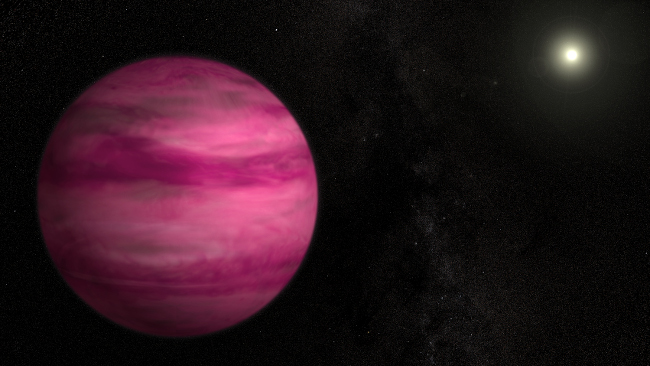
You can read the article below....
http://www.theregister.co.uk/2013/08/06/low_mass_jupiter_exoplanet/

"Its discovery implies that we need to seriously consider alternative formation theories, or perhaps to reassess some of the basic assumptions in the core-accretion theory."
Examples of our Solar System said:The outer two planets of the Solar System, Uranus and Neptune, are believed to have migrated outward in this way from their formation in orbits near Jupiter and Saturn to their current positions, over hundreds of millions of years.[2] Eventually, friction within the planetesimal disc made the orbits of Uranus and Neptune circular again.
Well really. That's just inconsiderateBut it's forgiven because it's a lovely colour.
That is it's real colour, right? Someone's been to take a proper photo?
Good.
A planet that is positively pink?... certainly not that pink panther blob in that artist impression there.
A planet that is positively pink?
It is (by their estimate: 160 million years old) a very young system. Too young for planetary migration, perhaps?
